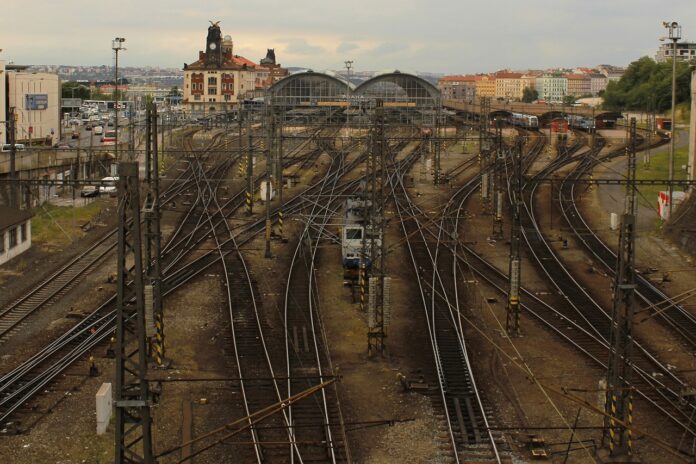It is widely believed that the development of railways was preceded by the industrial boom in the second half of the 18th century. During this period, the brilliance of science and technology gave birth to the steam engine, granting humanity the ability to use machines for transporting goods over long distances.
However, the first such machines were quite bulky, noisy, and produced a lot of smoke and gas. Initially, many people reacted to them with superstitious fear and rejection. But with time, the advantages of the steam engine were recognized: it became the “heart” of land transport moving on rails – steam locomotives.
A Bit of History
The idea of using pre-laid tracks for transporting heavy objects is not new. The Greeks invented a method of easing their work by laying stone grooves well-greased with fat. These grooves were used to place special containers filled with goods, which were then pushed to their destination.
Later, stone was replaced by wood, and the containers by wagons with flanged wheels (wheels designed to stay on the rails). These tracks were used in mines and underground tunnels for extracting minerals from beneath the earth.
The convenience of underground rails inspired the construction of surface railways. The first of these was the “Wollaton Wagonway,” only 3 km long, laid by miners to transport coal from Strelley to Wollaton. Horses were used to pull the wagons along the rails. Initially, they transported only goods, but later, people began traveling this way too.
However, the true “railroad revolution” happened in 1804 when the first steam locomotive appeared. This machine was created by Richard Trevithick. The design wasn’t perfect and required further improvements, but it set the right direction for development and made it clear to society that the future belonged to railroads!
Today, steam locomotives can only be found in museums. Freight and passenger trains now move along rails thanks to diesel and electric locomotives, and sometimes even magnetic propulsion.
Interesting Facts About Trains and Railways
- People were initially very reluctant to travel on the first trains. They were simply afraid to get into the wagons, considering them “the product of a devilish mind.” To attract passengers, tickets were sometimes given away for free.
- The first train traveled at a speed of around 30 km/h. In comparison, modern high-speed trains can cover 580 km in 60 minutes.
- Originally, third-class train cars had no roofs. In bad weather, people would sit under the benches instead of on them.
- According to statistics, traveling by train is 45 times safer than traveling by car.
- The longest railway in the world is the Trans-Siberian Railway (“Moscow-Vladivostok”), covering a distance of 9,438 km. Exactly halfway along this route is the station Polovina (“Halfway”).
- In France, a law was passed in 1910 prohibiting kissing on train platforms. Prolonged goodbyes between lovers caused delays, costing the railway company money.
- In one tragic incident in Ohio, a train collided with a steamboat. The “inter-transport” accident happened due to flooding, which caused the rails to sink under more than a meter of water. The train driver, apparently a risk-taker, chose not to stop despite the obstacle, and the steamboat captain didn’t expect to encounter train cars.
- Some railway workers make their living thanks to perfect musical pitch. These workers, called track inspectors, check the condition of wheels by tapping them and determining their integrity based on the tone of the sound.
- The U.S. once developed an experimental locomotive with a rocket engine that reached a speed of over 9,000 km/h. The problem is that such speeds are harmful to the human body.
- In Canada, tourists can enjoy a unique experience – traveling by rail in a car modified with wheels for the tracks.
- In Maeklong, Thailand, a railway line runs right through a marketplace. Vendors must temporarily remove their stalls and raise their canopies when a train passes. However, they’ve found a way to profit from the situation by selling their goods to passengers during the train’s journey.
- The longest freight train ever traveled on the Australian railway. It consisted of 682 cars, with a total length of over 7 km. It took 8 diesel locomotives to move the train.
- In Japan, trains run precisely on schedule. A one-minute delay is considered a significant event, and the driver may even lose their job as a result.
- Argentine railway workers came up with a clever advertising idea – passengers can buy tickets for a special train where they have the chance to “become a victim” of a staged robbery. The twist is that no one knows for sure which train ride will proceed smoothly and which will be “interrupted” by bandits.
